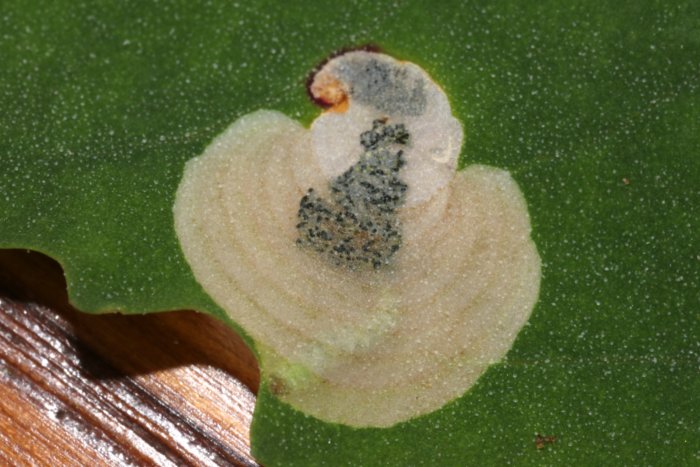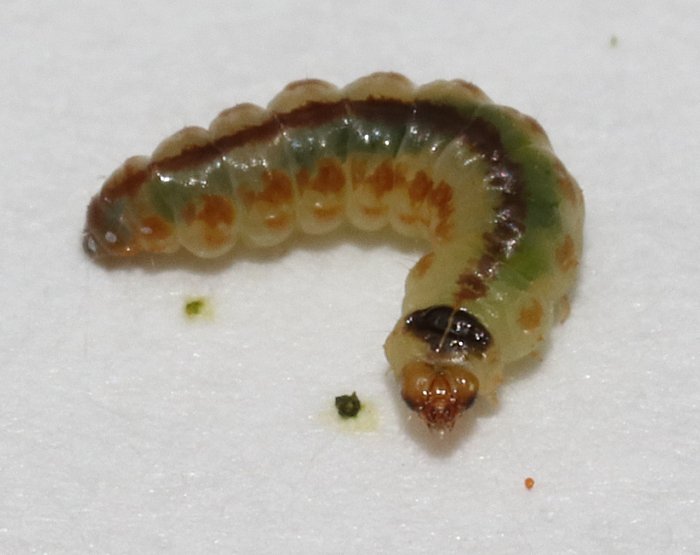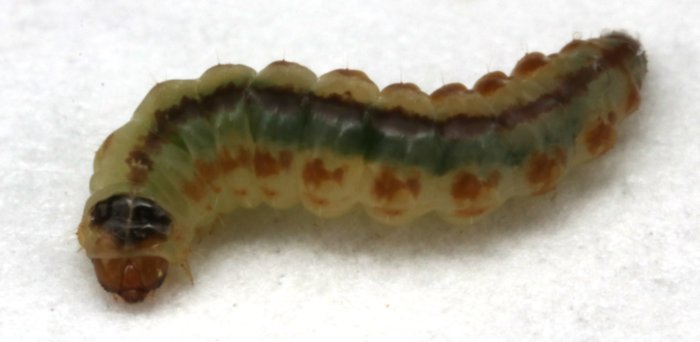Lambsquarters Leaf Miner

So, there is this common plant around here known by any of several names (Lambsquarters, melde, goosefoot, wild spinach and fat-hen), but the official name is Chenopodium_album. Anyway, on August 9, 2025, Sandy noted that one of these plants growing beside the barn was infested with leaf-miners, and so brought me a leaf to photograph. Leaves are basically a sandwich of two membranes, with the green photosynthesizing cells between these membranes. And leaf miners are tiny larvae that are small enough to fit between the membranes, and eat out the green cells between them. This leaves a light-colored patch or trail on the leaf, with the caterpillar sheltering inside.
So, I tore open one of the mines, and dumped out the caterpillar contained therein. And here it is:

It was about the size of a grain of rice. What looks like a green stripe running down its back isn’t actually skin pigmentation, it is its digestive tract stuffed full of the green leafy matter that it has been eating.
It turns out that the lambsquarters plant is well-known for its susceptibility to leaf-miners, and this caterpillar looks like the most common one: the Lambsquarters Leaf Miner, Chrysoesthia sexguttella.


The adult form turns out to be a rather attractive (if tiny) moth, jet black with bright yellow bands across its body. I probably missed my opportunity to catch one of the adults this year, but they should be out in the spring.
Anyway, this is a non-native species from Europe. But that’s OK, because the plant that it eats is also a non-native species from Europe. They presumably came over together.
Lambsquarters has a funny sort of relationship to humans. On the one hand, it is very competitive, particuarly in disturbed soil, and in North America it is widely considered a noxious weed. On the other hand, it is sometimes grown intentionally, as the leaves are edible (they can be cooked up and eaten like spinach). The flower and seed heads can also be cooked and eaten, and the seeds are also edible if you can collect enough of them. The chickens are fond of the leaves and seeds as well. So, if the plant is a weed, then the leaf miners are useful weed control. But if the plant is a crop, then the leaf miners are a pest. Although, I expect that the caterpillars are just as edible as the plants, so maybe the leaf miners themselves could be a crop . . .

Interesting take on how to interpret the caterpillar as friend or foe, depending on the desirability of the plant! I haven’t seen it on the wet coast yet, but distribution maps say it’s here, so I’ll look out for it.